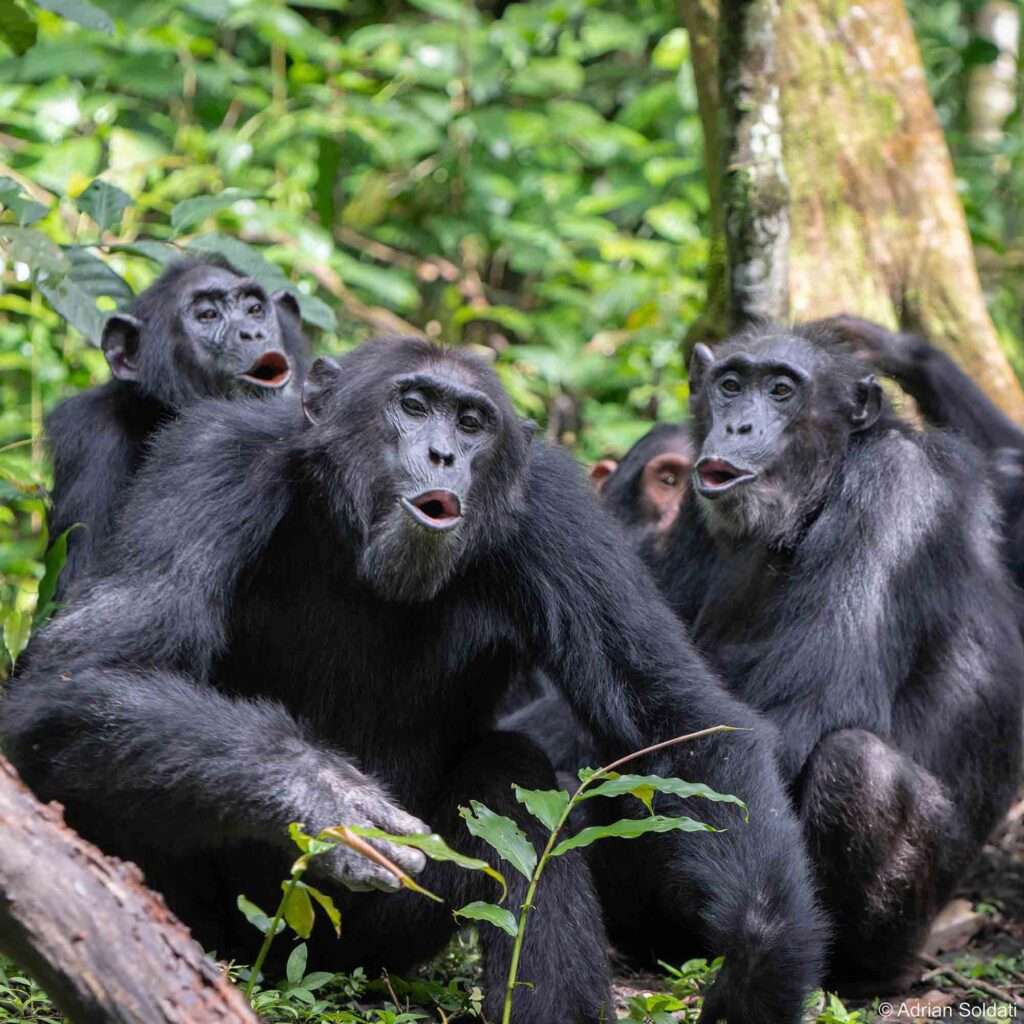A new study has suggested that people’s closest-living relatives, chimps, can combine calls to communicate new meaning from the sequences in a similar way to when humans make sentences.
Scientists from the University of Zurich (UZH), in Switzerland, discovered that chimpanzees in Uganda can combine different sounds – similar to the human ability to structure sentences and form larger sequences with which to communicate.
This particular ability, according to postdoctoral student at UZH’s Department of Comparative Language Science and lead author of the study Mael Leroux, is evolutionarily more ancient than previously believed.
Leroux said in a statement obtained by Newsflash: “Chimpanzees produce ‘alarm-huus’ when surprised and ‘waa-barks’ when potentially recruiting conspecifics during aggression or hunting.

“Our behavioural observations suggest that chimpanzees combine these calls when exposed to a threat where recruiting group members is advantageous, such as when encountering a snake, but until now experimental verification has been missing.”
Leroux and her team showed that chimpanzees can understand each other by conducting controlled experiments on chimpanzees in Uganda.
They reportedly presented the apes with model snakes and were able to evoke the call combination.
The chimps seemed to have the strongest response to playbacks of the combination than when hearing either the ‘alarm-huu’ or ‘waa-bark’ alone.
UZH professor Simon Townsend said: “This makes sense because a threat that needs recruitment is an urgent event and suggests listening chimpanzees really are combining the meaning of the individual calls.”

He emphasised that the new findings could possibly shed light on the evolutionary roots of the compositional nature of languages.
Townsend added: “Humans and chimpanzees last shared a common ancestor approximately six million years ago.
“Our data, therefore, indicate that the capacity to combine meaningful vocalizations is potentially at least six million years old, if not older.”
Leroux said: “These data provide an intriguing glimpse into the evolutionary emergence of language.”
Further research should help confirm whether compositionality originates prior to the appearance of language itself, claimed the scientists.
The study was published in the British weekly scientific journal ‘Nature’ on Thursday, 4th May 2023..

To find out more about the author, editor or agency that supplied this story – please click below.
Story By: Georgina Jadikovska, Sub-Editor: Marija Stojkoska, Agency: Newsflash
The Ananova page is created by and dedicated to professional, independent freelance journalists. It is a place for us to showcase our work. When our news is sold to our media partners, we will include the link here.




